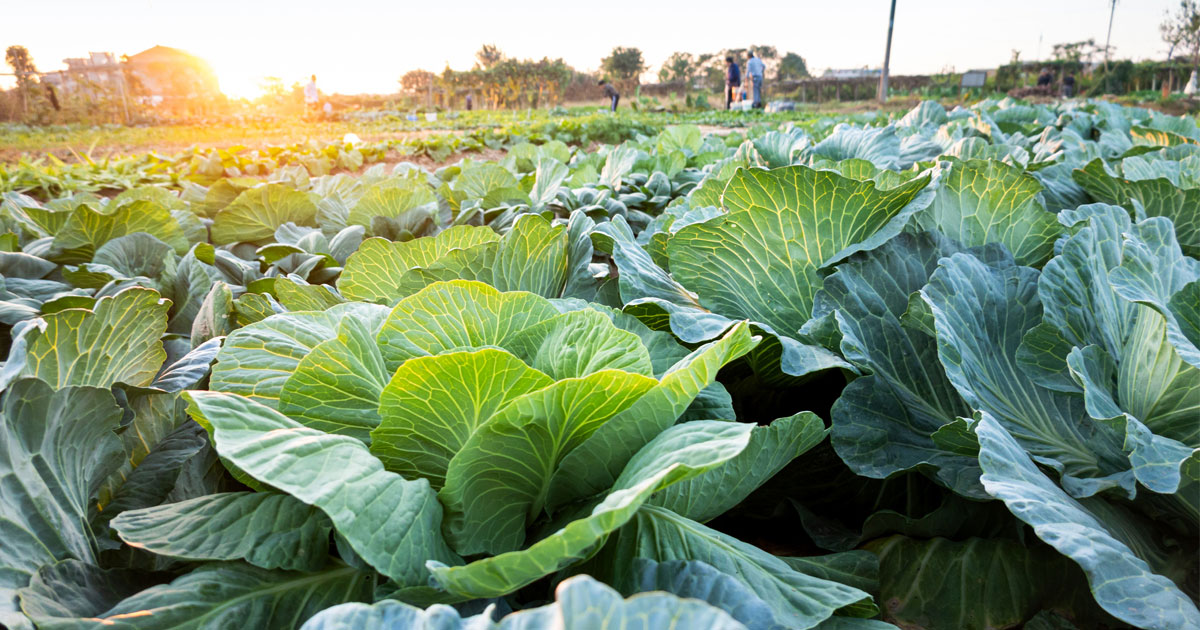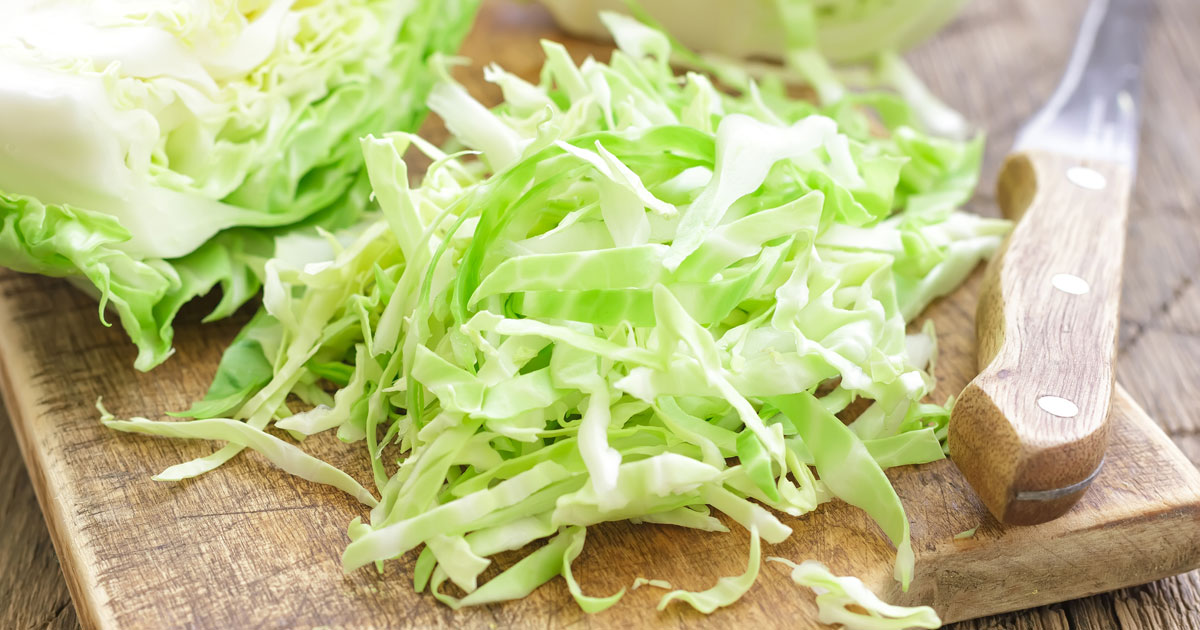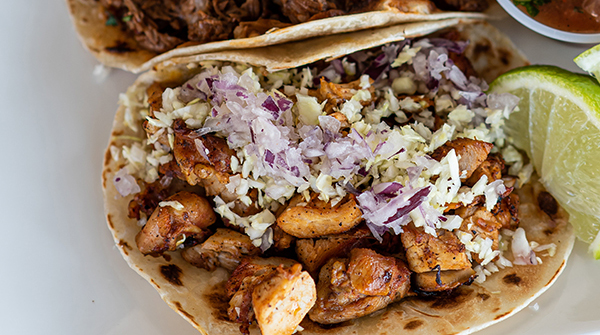If cabbage isn’t the first thing that comes to mind when you think of traditional Mexican food, you’re not alone. However, this humble vegetable plays a critical role in many authentic Mexican dishes, including being served as a topping or coleslaw on the side of countless creations. Nutritious cabbage adds a signature flavor and texture to many dishes in Mexican cuisine while keeping your tastebuds happy and your body healthy.
We love adding cabbage to our authentic Mexican cooking at Backyard Taco and want to spread the word about this ingredient’s power. So why is cabbage such a key part of Mexican cooking? Let’s take a closer look at some of the main reasons to love this food.
Cabbage Is Extremely Versatile
Cabbage is an incredibly versatile vegetable. When cut into thin slices or shredded, you can eat it raw, braised, or roasted. Cabbage, in all its cuts and preparations, can add rich texture, crunch, and freshness to a wide range of food, especially Mexican dishes. For instance, you can whip up a simple cabbage and mayonnaise slaw to top some traditional tacos, or you can add cabbage to a hearty caldo de res (beef soup) to warm you up on a cold night. Regardless of what you add your cabbage to, it will be even more filling, healthy, and tasty. As you can see, cabbage is an ideal choice to add to your meal.To add to the versatility, there are two main types of cabbage you can use in your cooking: green cabbage and red cabbage. Green cabbage is often so light green it appears white but red cabbage is a deep purplish color, and you can use them interchangeably in most recipes – or you can even use both. While there are other types of cabbage sometimes found in Mexican cooking, including savoy cabbage (often called Chinese cabbage) or Napa cabbage) green and red are the most popular. Bear in mind that red cabbage often tastes a bit stronger and may have peppery notes. Red cabbage also has more antioxidants, making it the healthiest choice to spice up your meal.
Cabbage Is a Source of Nutrients
Adding cabbage to your meals is an easy way to ensure you get a whole host of nutrients and vitamins to keep your body healthy. Cabbage contains lots of vitamins C, A, and K, as well as antioxidants that help protect the body against cell deterioration and disease. While you might already know how important vitamin C is for immune health and protecting your blood vessels and skin, you might not be aware of how important vitamin K is for supporting your heart and bones and even keeping your skin and hair healthy. Cabbage is also a good source of calcium, potassium, and magnesium, all of which are important for overall health.Plus, cabbage is quite low in calories and high in fiber, which can be vital for keeping your gut happy and your blood pressure at a healthy level.
While most Mexican dishes contain fresh or otherwise unfermented cabbage, its fiber and phytosterols can still help reduce your cholesterol levels, which is important for reducing your risk of poor heart conditions. This powerful food may also help ease inflammation, swelling of body tissue linked to serious health conditions such as heart disease, diabetes, and Alzheimer’s disease. With these benefits combined, it’s clear that when you add cabbage to your meal, you are not just giving your body a burst of nutrients; you’re working to keep it healthy for the long run.

Cabbage Has a Unique Flavor
Another reason cabbage is commonly used in Mexican cuisine is because of its unique flavor. You might be slightly taken aback by cabbage’s pungent smell, but don’t be fooled; when you cook cabbage, it takes on a sweet and savory flavor that pairs well with many Mexican spices and foods, such as chili powder, cumin, and lime juice. When eaten raw, its fresh pepperiness is the perfect complement to savory, earthy meats and seasonings. Whether you’re using it as a topping for a meal like tacos or as a defining ingredient of a soup or stew, cabbage will add a distinct flavor that really takes your cooking to the next level.While cabbage may not be one of the ingredients that immediately come to mind when you think of authentic Mexican cuisine, it plays an essential role in many of the country’s most beloved dishes. It adds a one-of-a-kind flavor and texture to everything from stews to fish taco fillings, and it’s a healthy, versatile, accessible ingredient.
Where Does Cabbage Come From?
The best cabbage comes from a local garden, but before all that, it’s difficult to pinpoint who first propagated this vegetable. We know that in Western Europe, the food probably dates back about 3,000 years. In the Eastern hemisphere, cabbage has been traced to Northern China in about 4,000 BCE.
We know for sure that many figures from Rome and Greece knew about cabbage, like the botanist Theophrastus, who wrote about it in his texts. The Romans also recorded using cabbage for healing purposes. For example, they used it to treat cases of gout and headaches, and Romans and Europeans claimed that cabbage allowed them to drink more alcohol without negative effects. In the 8th century, the Roman ruler Charlemagne loved the vegetable and understood its importance, ordering it to be properly cultivated and regulated throughout his land.

Flash forward to 14th-century Europe, and people were using cabbage while cooking in their day-to-day lives. For example, back then, you might have seen European explorers using cabbage in meals on ships to prevent diseases like scurvy. As cabbage set out on the open sea, it eventually made its way to present-day North America, when Europeans like the French and Spanish colonized the land. It made its way to the natives there, who learned to grow some crops once native to Europe.
Today, cabbage still holds a strong grasp on cooking on the continent. In Mexican cooking, cabbage graces plates of traditional dishes like tacos and fajitas. If you travel to any part of Mexico today or visit Mexican-American restaurants or households, you will likely see cabbage included with some of your favorite dishes. As a side note, if you’re looking for cabbage on your favorite Mexican menu, it’s worth answering the question: “What do Mexicans call cabbage?” In Spanish, the word for cabbage is la col. You might also hear Mexicans saying repollo to refer to the vegetable.
Cabbage: A Staple of Traditional Mexican

Cabbage is a staple in many traditional Mexican dishes. Partially, that’s because you can find the vegetable almost all year round in any region of the country, from big cities to small villages, and it keeps well even without refrigeration. Due to this accessibility, people all over Mexico have been cooking with cabbage for generations. A classic way to use cabbage is simply to cook it with a few other flavorful ingredients, like tomatoes and onions. You can add it to a casserole dish with other vegetables and water, let it simmer, and enjoy it with Mexican rice, Panela cheese, and spice like piquín chile.
Cabbage is also a key ingredient in lots of scrumptious Mexican side dishes, especially coleslaw. There are countless recipes for coleslaw, but the dish is usually made with a mix of green and red cabbage, onions, carrots, cilantro, and often a natural sweetener like honey. You can also mix in more ingredients to give it a stronger flavor, like sour cream, mayonnaise, and even corn, black beans, and jalapeños. No matter how you make it, coleslaw makes a flavorful raw side dish for tacos and many other Mexican favorites, like tostadas, enchiladas, and fajitas. In fact, many street taco vendors in Mexico will often offer a topping called repollo, which is a simple mix of chopped cabbage and lime juice.
Cabbage is also a key ingredient in many soups and stews, such as caldo de res, a beef soup made with carrots, cabbage, zucchini, cilantro, potatoes, and corn. There is also a delicious traditional Mexican soup called Pozole, made from dried maize kernels called hominy, pork, and garnished with cabbage. However, cabbage doesn’t always function as a side ingredient. For example, in Central Mexico, you can find a take on the Spanish stew puchero that uses a whole head of cabbage!
Cabbage vs.Lettuce for Tacos
Yes! In fact, that’s one of our favorite ways to use cabbage because it capitalizes on its unique flavor and crunch. One of the many reasons cabbage is so great is that you can use it as a more nutritious, yummy substitute for other ingredients, like lettuce. For example, if you are following a taco recipe that calls for lettuce, you can easily use green cabbage as a substitute and add a bit more flavor and nutrients to every bite.

At Backyard Taco, we know how cabbage can make a taco even better.
That’s why we offer cabbage as a topping for multiple dishes on our menu, like our carne asada (steak) taco and our pollo (chicken) taco.
Other well-known Mexican dishes that cabbage can add a punch to include the following:
-
- Quesadillas – A classic Mexican meal made with tortillas, cheese, and often meats and veggies, you can opt to add cabbage to your quesadillas to make them extra nutritious and healthy. At Backyard Taco, we offer six types of tasty quesadillas with the option to include a healthy kick of cabbage.
-
- Bueno Bowls – A Bueno Bowl features all your favorite Mexican ingredients piled in one delicious bowl. This warm gooey dish is full of nutrients and protein, and you can customize it with your favorite Mexican meats, then top it with some cabbage crunch.
-
- Burritos – If you prefer a traditional burrito, cabbage is the perfect addition to create some crisp texture. Simply choose your favorite protein, whether pollo, carne asada, birria, al Pastor, or beans, and customize it with toppings.
Whether you’re a skilled home cook or eating delicious Mexican food out on the town, your next authentic Mexican dish could use some cabbage. You might not even notice how many meals you consume that are already made better by a handful of cabbage.
Next time you’re biting into a juicy taco or plunging your spoon into a loaded Bueno Bowl, take a moment to appreciate the humble cabbage and its important role in Mexican cooking.

Get Authentic Mexican Food at Backyard Taco
We love authentic Mexican food at Backyard Taco, including cabbage dishes, and we want to share the love. Check out our online menu for delivery or pickup, and you’ll see how cabbage can contribute to multiple authentic Mexican meals.Whether you need Mexican eats for a corporate gathering, large party, holiday celebration, or just a casual weekday dinner, Backyard Taco can help via our catering menu
Resources:

Dr. Tyler loves tacos! He is one of the owners of Backyard Taco, and can sometimes be found moonlighting there at night or on the weekends.
Dr. Tyler Robison is an alum of Mesa’s Mountain View High School. He graduted from Brigham Young University before being accepted to the “Top Ten-nationally ranked” University of Louisville in Kentucky, where he earned his Doctorate in Dental Medicine and a Master’s Degree in Oral Biology. He graduated with honors in the top ten percent of his class. Dr. Robison continued at the University of the Pacific in San Francisco, where he received a second master’s degree in dental science and his orthodontic certification.
Dr. Tyler enjoys serving in his community. He is a provider for the Smile Back Foundation, which offers scholarships for free dental treatment to underprivileged East Valley students. He is also a Major in the U.S. Army Reserve and served during Operation Enduring Freedom in 2008.
Dr. Tyler Robison’s favorite pastimes include spending time with his family on the lake, at the beach, or on the slopes. He is an avid and crazy snowboarder! He has three incredible sons and one sweet daughter: Caden, Jace, Crew, and Bliss.


